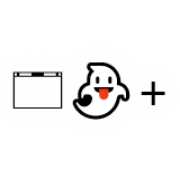
Limit Simplode Suite RAM Usage (§🗜)
Tell Simplode Suite to reduce its physical memory usage.
Notes
- This feature may be less useful than it appears. Programs automatically use more memory than they need when extra memory is available and should release that memory when it is needed by other apps.
- Limiting memory usage unnecessarily can be wasteful, but it can also be beneficial to already have the memory free when loading new apps or features, rather than having to unload old memory first before loading new memory.
- This feature does not currently work with features that run in separate processes, but those features tend to use less memory than the main process anyways.
Configurables
-
Memory Management Strategy (Default: Balanced)Determines how the tool will manage its own memory consumption.- Maximize Memory Savings: The tool will try to keep its RAM usage to a minimum. This may result in slight delays and an increased amount of disk activity when activating the tool's functions.- Balanced: The tool will take basic steps to reduce memory usage while trying to keep disk activity low.- Maximize Performance: The tool will use any amount of RAM needed to ensure minimal delays and disk activity when activating the tool's functions.Automatic Memory Limiter (Default: False)If enabled, the tool will try to automatically reduce the amount of physical memory it is using according to the selected target size.Memory Usage Target Mebibytes (Default: 150)Depending on which features of the tool you are using and your scaling/DPI settings, the minimum amount of memory necessary for the tool varies. If this value is lower than the minimum required memory, there will be wasted effort unloading and then immediately reloading necessary resources. This limit works more like a suggestion than a rule, so the tool will still use more memory when necessary.Automatic Memory Limiter Interval (Default: 30)This setting is the number of seconds the tool will wait between checks when the automatic memory limiter is enabled.Individual Process Executable Names (Default: True)When enabled, each coprocess will use its own separate executable file. This makes it easier to identify specific types of Simplode Suite activity with other tools, such as the task manager. You must restart the tool for changes to this setting to go into effect. This setting has nearly zero cost, because nearly all of the code is located in library files which the processes share. When I last checked, the individual executables files themselves are only around 14KB each.Show Process Windows (Default: False)When enabled, coprocesses will have visible windows. This makes it easier to identify specific types of Simplode Suite activity when looking at them with other tools, such as the task manager, but may clutter your taskbar or screen in certain situations. You must restart the tool for changes to this setting to go into effect.
Found in Menus
Package Availability

Limit Simplode Suite RAM Usage (§🗜)
Tell Simplode Suite to reduce its physical memory usage.Notes
- This feature may be less useful than it appears. Programs automatically use more memory than they need when extra memory is available and should release that memory when it is needed by other apps.
- Limiting memory usage unnecessarily can be wasteful, but it can also be beneficial to already have the memory free when loading new apps or features, rather than having to unload old memory first before loading new memory.
- This feature does not currently work with features that run in separate processes, but those features tend to use less memory than the main process anyways.
Configurables
-
Memory Management Strategy (Default: Balanced)Determines how the tool will manage its own memory consumption.- Maximize Memory Savings: The tool will try to keep its RAM usage to a minimum. This may result in slight delays and an increased amount of disk activity when activating the tool's functions.- Balanced: The tool will take basic steps to reduce memory usage while trying to keep disk activity low.- Maximize Performance: The tool will use any amount of RAM needed to ensure minimal delays and disk activity when activating the tool's functions.Automatic Memory Limiter (Default: False)If enabled, the tool will try to automatically reduce the amount of physical memory it is using according to the selected target size.Memory Usage Target Mebibytes (Default: 150)Depending on which features of the tool you are using and your scaling/DPI settings, the minimum amount of memory necessary for the tool varies. If this value is lower than the minimum required memory, there will be wasted effort unloading and then immediately reloading necessary resources. This limit works more like a suggestion than a rule, so the tool will still use more memory when necessary.Automatic Memory Limiter Interval (Default: 30)This setting is the number of seconds the tool will wait between checks when the automatic memory limiter is enabled.Individual Process Executable Names (Default: True)When enabled, each coprocess will use its own separate executable file. This makes it easier to identify specific types of Simplode Suite activity with other tools, such as the task manager. You must restart the tool for changes to this setting to go into effect. This setting has nearly zero cost, because nearly all of the code is located in library files which the processes share. When I last checked, the individual executables files themselves are only around 14KB each.Show Process Windows (Default: False)When enabled, coprocesses will have visible windows. This makes it easier to identify specific types of Simplode Suite activity when looking at them with other tools, such as the task manager, but may clutter your taskbar or screen in certain situations. You must restart the tool for changes to this setting to go into effect.
Found in Menus
Package Availability



















































































































































































